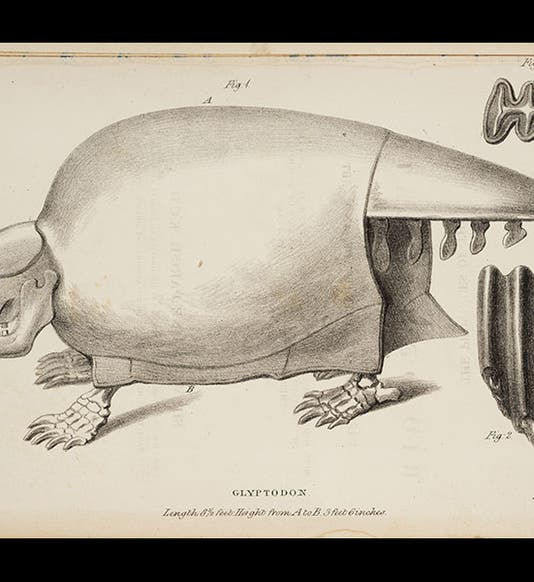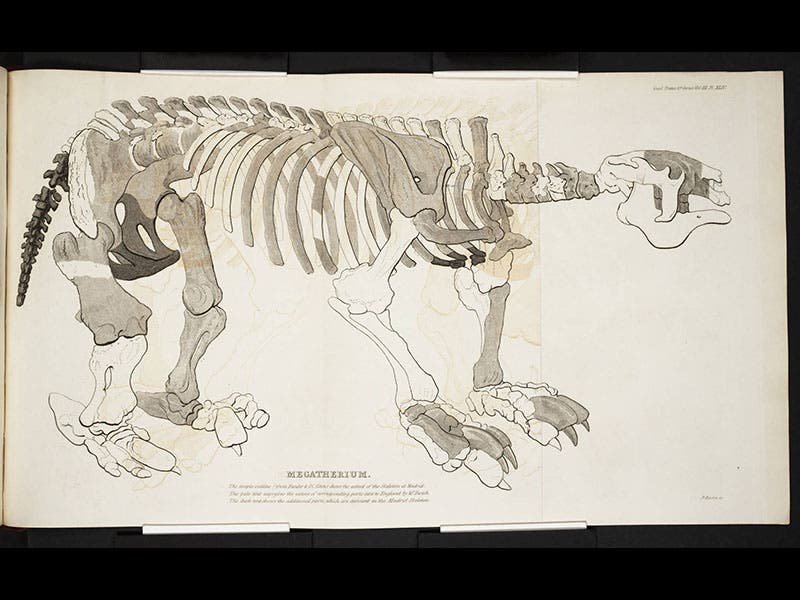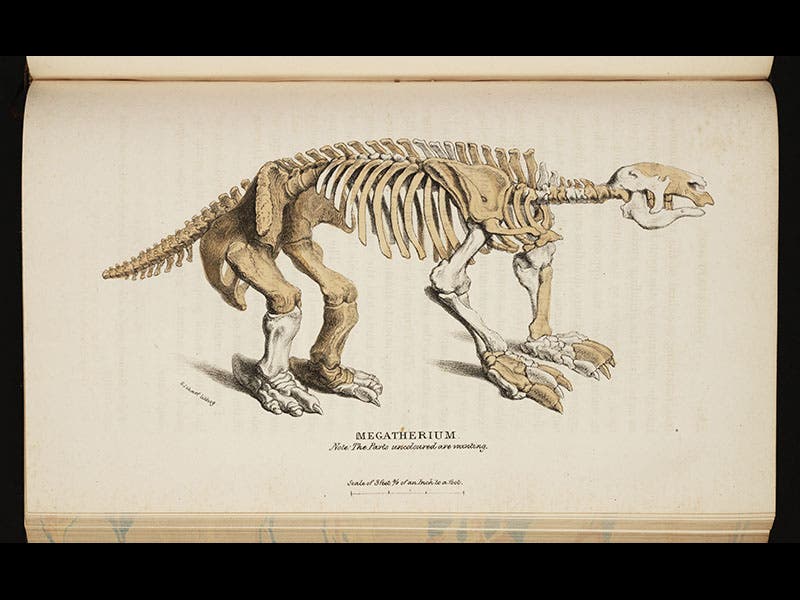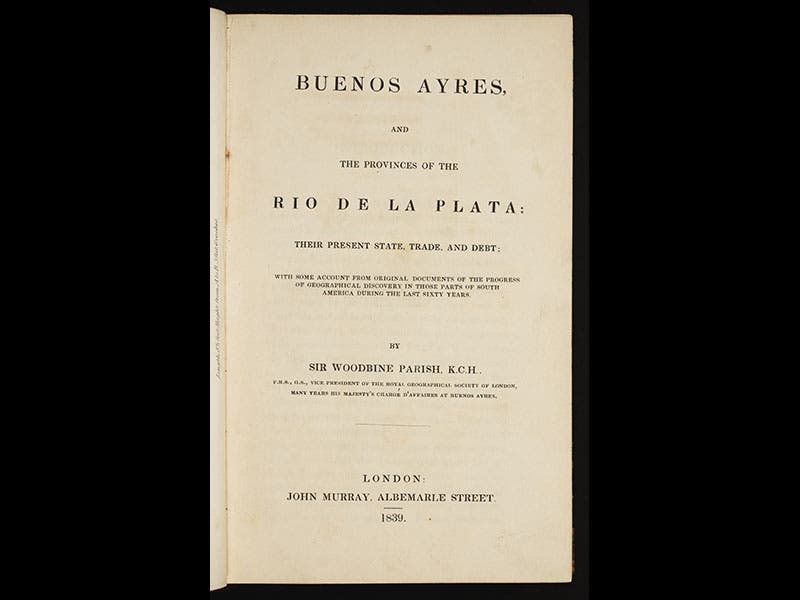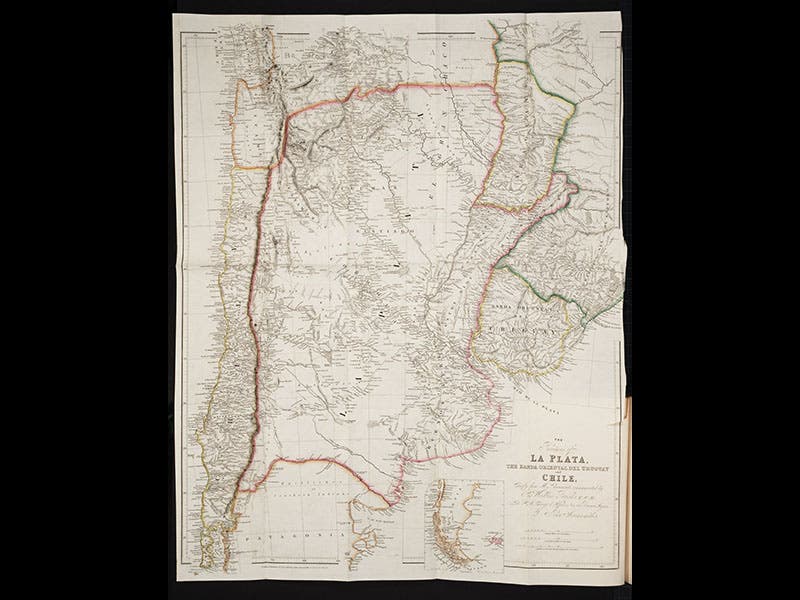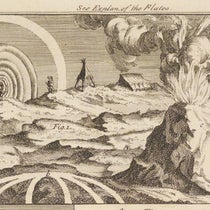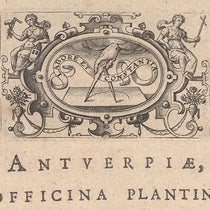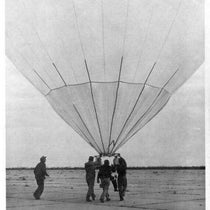Scientist of the Day - Woodbine Parish
Woodbine Parish, an English diplomat, was born Sep. 14, 1796. In 1824, Parish arrived in Buenos Aires as the newly appointed chargé d'affaires for Britain. In addition to establishing diplomatic liasons, he immediately began setting up a pipeline to collect natural history specimens, especially fossils, that could be sent back to London. He was especially interested in securing the bones of a Megatherium. The first specimen had been found in 1787 about 50 miles from Buenos Aires and had been mounted in Madrid, and the great anatomist Georges Cuvier had written extensively about it. But the Madrid specimen was deficient, and even worse for those in Paris and London, it was in Spain, so Cuvier never saw it in person. Cuvier concluded it was a giant sloth, but others thought it was more closely related to the armadillo, and so other specimens were needed.
After some years of searching, Parish's field agents finally located a skeleton on the Rio Salado, a tributary of the Rio Plata, and he promptly sent it back to the Hunterian Museum of the Royal College of Surgeons in London, where it was described by William Clift in 1832 (published 1835, second image). Parish also sent back a specimen of a newly discovered species of armadillo, the pink fairy armadillo, or Chlamyphorus, which was only partially covered by scutes, or armor (third image). Many naturalists thought that Megatherium was a giant version of this, especially since a number of large pieces of armor had been discovered in the same sites that had yielded Megatherium bones. However, Parish's men also unearthed a giant carapace from a different kind of extinct animal, more resembling a large tortoise, and it was ultimately determined that the bony armor thought to belong to Megatherium actually came from this new specimen, which was named (by Parish) Glyptodon.
After his return from Buenos Aires, Parish wrote and published a book, Buenos Ayres and the Provinces of the Rio de la Plata (1839). There is a hand-colored lithograph of his Megatherium skeleton in the text (fourth image), along with a pink-fairy armadillo (third image), and the newly-named Glyptodon is depicted on the frontispiece, the first time it had been illustrated anywhere (first image). We have Parish's book (and Clift's earlier paper) in our History of Science Collection. The finest illustration in the book is the hand-colored map of southern South America, which we include above as well.
Dr. William B. Ashworth, Jr., Consultant for the History of Science, Linda Hall Library and Associate Professor, Department of History, University of Missouri-Kansas City. Comments or corrections are welcome; please direct to ashworthw@umkc.edu.

